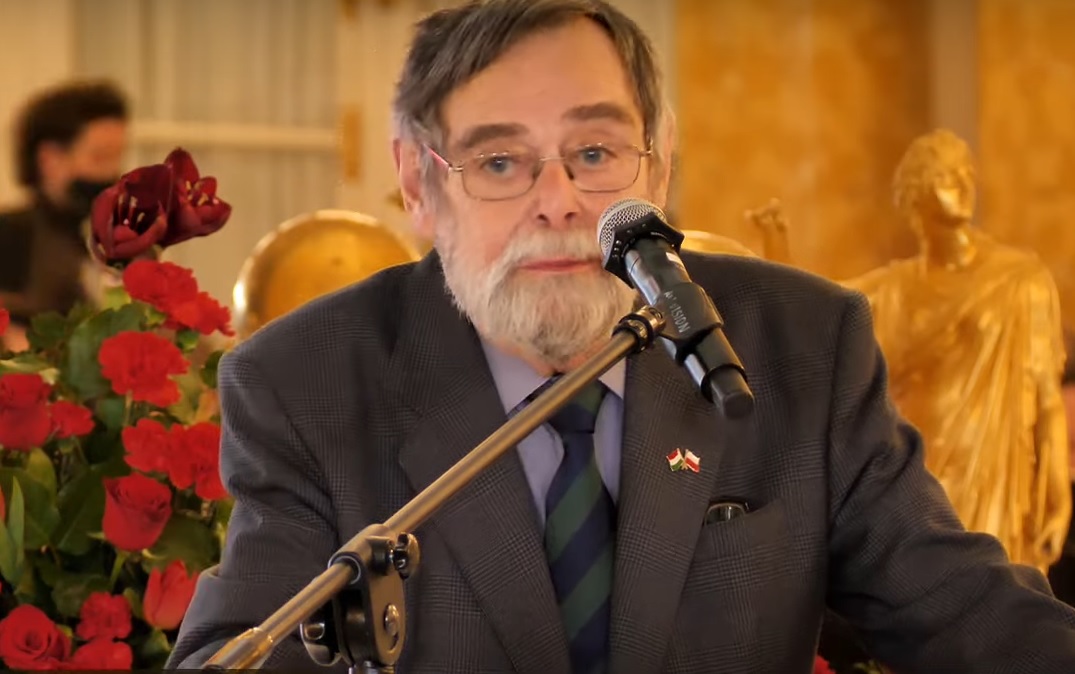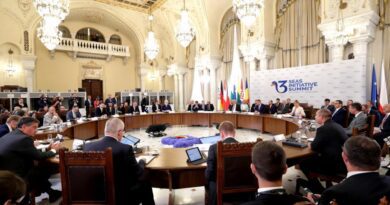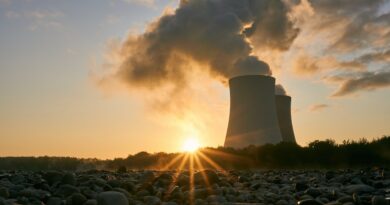ETS 2: An economic tsunami at the behest of the EU

“If ETS2 were to be introduced, it would trigger an economic tsunami. Experts estimate that the cost of this system in the next few years alone would amount to about a trillion PLN” – says prof. Zbigniew Krysiak from the Schuman Institute
TOMASZ ROWIŃSKI: What exactly is the ETS?
ZBIGNIEW KRYSIAK: It is a so-called tax on CO₂ emissions. Companies that produce energy from coal, gas, and other sources measure CO₂ emissions and pay a tax in proportion to these emissions. Today, this tax is about €100 per ton of carbon dioxide emitted. There were times when this tax was even approx. 300 euros per ton of carbon dioxide emitted. There was a strong increase in this tax in the fall of 2021, which resulted in as much as 60% of the cost of energy production being this tribute. Among other reasons, this is why energy prices rose. Now the cost of this tax is slightly lower, but it still costs much more than before the pandemic, when its price remained at 20-30 euros.
How does such a tax work?
From an economic point of view, such environmental taxes should be equivalent to the damage caused to the environment. That is, the value of the damage caused should first be determined, and the tax rate should correspond to the value of the damage. Unfortunately, in the case of ETS such an approach is not used, but we are dealing with a kind of “ceiling method”, which was introduced by the European Commission and applauded by the Civic Platform government, headed by then Prime Minister Kopacz. Prices for ETS units can actually now be set without reference to the estimated value of environmental damage.
When did the price of ETS go up the most?
The strong jump in the price of this tax occurred in October 2021 – that is, even before the Russian invasion – when it went from a level of around 30 euros all the way up to over 100 euros. Later, it grew even more.
Did emissions then perhaps rise sharply?
Of course not. We didn’t emit more.
So why such an increase in the tax price?
The reason was the admission of various financial institutions to the so-called market game under this tax. The ETS, by becoming a listed instrument, is subject to profit by financial and other institutions that are not CO₂ emitters.
So it can be said that the ETS has become an object of speculation?
Yes, this tax is an object of speculation because, as I said earlier, it has no fundamental reference to the valuation of environmental damage. On the stock market, for example, the value of shares comes from the valuation of companies, that is, their profits and economic power, done by investors. In the case of the ECJ, this process was ignored. Speculators, including financial institutions, were simply allowed to trade in ETS units, and they make money from this. Such speculators are able to price financial instruments, such as credit or deposits, and other such products, but not CO₂ emissions, which they do not produce, but which are a side effect of using certain raw materials and industrial technologies to produce energy.
Could this have been handled differently?
In the United States, those who are CO₂ emitters participate in the market for CO₂ emissions. If I emit CO₂ on an industrial scale, I can determine its share of costs and the profitability of CO₂ emissions in energy production for one technology or another. In short – I can determine at what tax level it is still profitable for me to emit CO₂. In this situation, those who emit CO₂ above the permissible level pay for permits for emissions above the set limit. On the other hand, those who emit less – below the limit – profit because they sell unused limits. This means that in the game between one and the other, permits – so-called certificates – are a trading voucher, so to speak. Those who emit CO₂ above the limit can realistically determine whether persisting with more carbon-intensive technologies pays off for them. Of course, when emissions far exceed the limit, it ceases to be profitable for companies, prompting them to invest in newer technologies. In this case, the limit should be the cost of environmental damage, not some random and speculative level set by the European Commission and financial institutions.
And what about the limits themselves?
Setting limits is another problem. The limits are not the result of market play between CO₂ producers, but are “randomly” set by EU management. They can announce a new limit at any time, which will automatically raise prices. This results in the fact that many companies in Europe, although investing in low-carbon technologies, have to pay large taxes because the emission limits are constantly being raised, even though the costs to the environment are fixed or even decreasing.
What will the introduction of the second phase of the ETS mean?
The first phase of the ETS was to tax companies that emit CO₂ in the process of energy production. The second phase, which I hope will not come into effect, would apply to emissions by transportation and construction companies and households. Taxation would cover not only freight transportation, but also passenger cars. This would significantly increase the cost to the economy. Many companies would have to go bankrupt. This measure is in opposition to the logical system of reducing taxes and introducing subsidies that works in the United States. There, a law has been enacted to reduce inflation, which is the result of rising energy prices, through tax cuts and subsidies to entities and the wider socio-economic sphere that reduce CO₂ emissions through the use of new and cheaper technologies and energy sources. Americans do not impose administrative penalties in the form of a tax such as the ETS, because the tax imposes costs. If a utility has higher costs, it generates less capital to invest in low-carbon technologies. The measure the EU is using is illogical and discouraging. At the same time, it leads to a deterioration in the efficiency of the EU economy as a whole. In America, tax breaks are used instead of burdens, as well as government support through the provision of various non-refundable subsidies.
What does this look like?
If someone introduces low-carbon technology, he or she receives a tax credit and, in some cases, additional subsidies from the state. The law to reduce inflation is a very elaborate document that specifies precisely who has to pay, how much and for what. It also shows justifications. This is an example of putting in place healthy economic mechanisms that give a boost to development. This is how a healthy energy transition mechanism was created in the United States.
What about the ETS?
This tax in this formula does not make sense, and it needs to be abolished or such a formula and mechanisms need to be proposed so that it stimulates rather than discourages the implementation of cheaper technologies and energy sources.
If ETS2 is introduced, what effect will it have on Poland?
If ETS2 were to be introduced, it would trigger an economic tsunami. Experts estimate that the cost of this system in the next few years alone would amount to about a trillion PLN, which would be one-third of our country’s annual GDP, which is about 3,000 billion PLN. This is ab unimaginable sum of money if we consider that our public debt is about 1.4 trillion. Accumulating such capital is currently impossible, given the capacity of our economy. The second problem is that ETS2 would lead the Polish economy to operational and business paralysis, as electromobility is also wanted to be introduced in parallel. Electromobility means removing all but electric vehicles from the market and the streets, which will require spending on new infrastructure, such as wiring and building charging stations. Right now, it takes a minute to fill up with gasoline, while it will take an hour to charge a passenger electric car, and much longer for trucks, ignoring the current technological barrier to producing high-powered trucks. All this madness is happening under pressure from Germany, which currently holds a monopoly on electromobility in Europe.
What problems do you see still on the horizon?
If we look at the world’s supply of lithium as a rare element, it is relatively scarce. The source of lithium that the Germans were counting on was Ukraine. The Russians and Chinese also have significant amounts of the element, but the Chinese will leave what they have for themselves, as they predestine themselves as an electromobility giant. Other parts of the world also have some resources, but they are also limited.
The Germans have converted. We remember them saying at the beginning of the war that Russia would be victorious in a few days, and there was nothing to help the Ukrainians, because, according to some hypotheses, Berlin had a set strategy with Moscow for access to those lithium deposits in Ukraine.
There are also more practical problems.
These batteries are burning in a dangerous way. We remember a recent case where a fire department in Poland spent 24 hours putting out an electric car. Lithium batteries are difficult to extinguish. Today in Europe, electric cars are not allowed on ferries in various places, and this also applies to underground parking lots. Imagine being in a very long tunnel and such a car catches fire. We would immediately have a chain explosion of all the vehicles in front and behind.
Why are car batteries so difficult to extinguish?
Because the temperature of lithium, once it ignites, is so high that it’s impossible to extinguish it with any fire extinguisher, especially the small ones we carry in the car.
Hydrogen cars seem to be better in these terms, but we still have to wait for that, because there are a whole bunch of technical problems that won’t be solved in a few years to start large-scale production of such cars.
So the ETS has primarily political purposes?
It is a tool for the Germans to maintain their economic, and therefore political, dominance. A tool that destroys freedom of economic choice. A top-down planned economy, and that’s what the ETS is, will work badly, as the Soviet Union, in which the economy was just administered, proved. What the EC is doing, at Germany’s command, is to return to a system of central control in which Germany is to be the only beneficiary. Such a policy will result in paralysis and bankruptcy in many sectors of the economy throughout Europe due to the cost of emissions. That is why it is right for Poland to act in the area of building nuclear power plants, especially so-called small modular power plants, each of which can serve, for example, one city of 200,000 people. Nuclear power means independence from the madness of the ETS system. Although it is conceivable in this situation that in the event of domination in the EU and Germany by leftist and illiberal groups, it will come to pass in the future under various ideological pretexts to tax nuclear energy as well.
How does Germany intend to make money at our expense?
The Germans want to flood all of Europe with their electric cars. They, as of today, have invested in the electromobility industry the most after China. The French are far behind, even the Americans have put less funds into this sector. I think they will exhaust the possibilities of this development-business model after 10-20 years, when societies will feel its consequences. However, during this period, Berlin has a chance to earn powerful money at the expense of others. This is how they have made money in the past – from the war, from forced labor of the people, and from the plunder of cultural goods and economic assets of Poland to the tune of about 6 thousand billion zlotys, which is two years of the current Polish GDP. The current actions of the Germans are leading to an increase in CO₂ within the ETS, which is supposed to generate pressure to introduce electromobility.
Why should they care so much about this?
Because they want – and there are already plans to do so – for the ETS money to flow into the EU’s backyard and not go back into national budgets. The EU doesn’t have a cash register, which means that, for example, money from the Reconstruction Fund has no cover. The EU is, in a sense, bankrupt. Hence also the idea to centralize tax revenues for so-called CO₂ emissions. When they are centralized, every country will have to pay, but as part of the redistribution, maybe only Germany will receive the funds under the guise that it produces electric cars, and those countries that agree to form a coalition to shut the mouths of rebelling nations. This is the vision of Europe that the leaders in Germany, as well as the establishment now ruling France, have. France might change its position if groups in favor of Schuman’s Europe came to power. But nothing will change in Germany. There is one issue on which Germans agree and will not differ no matter who governs – that is the issue of their dominance and economic strength. No party grouping will abandon this direction. Germany has an internal agreement on this. This is their so-called national interest and German raison d’état.
What can be the response of Europe and Poland to this situation?
One must first be aware that things are moving in this direction. At this point, one should not play around with negotiations, but should tell Germany that we do not agree, we do not introduce, we do our own thing.
How can Brussels and Berlin then respond?
They certainly won’t come at us with tanks. After all, the Bundeswehr hardly functions at all. And the situation is dynamic. In a while Poland will be a net contributor in the EU, this will change a lot. Besides, no one can kick us out of the EU, there are no such provisions in the treaties. There is a provision that we can leave, but no one can throw us out without our will. In Poland, we annually spend about 50-60 billion zlotys on “500+,” on pensions, and other such programs, and transfers from the net EU coffers to Poland amount to approx. PLN 30 billion. We will soon be spending 4% of GDP, or about 120 billion, on our military, while we spent 200-250 billion on financial recovery programs during COVID. With these amounts, these 30 billion from the EU – or as I call them: “thirty pieces of silver – is the kind of thing we shouldn’t be disappointed about. We can no longer think in such terms, as some representatives of the opposition reason, that we are facing an economic meltdown if we do not get these “thirty pieces of silver.”
But can this German steamroller be stopped?
Of course. The Polish government act on ETS2 as it is going to do with the forests, that is, say: non possumus. Away from the forests. This, by the way, as I understand it, is the plan of the prime minister and the Polish government. This is the same way we should deal with all such matters because the political escalation of Berlin and Brussels that we are seeing is clearly moving in the direction of capital violence.
Berlin is not a force that has goodwill. We must not be naive. There, on the other side, is not someone who wants to seek common solutions and good for both sides, but intends to impose his own interests by force. Once upon a time, a German MEP explicitly said that Poland should be starved financially. This was not a slip of the tongue. Many people in power in Germany really think this way, and the scale of this belief is growing at the moment. People that are dangerous to Poland are becoming more and more bold. Such determined and conscious mischief must be halted, and this is the only solution.



